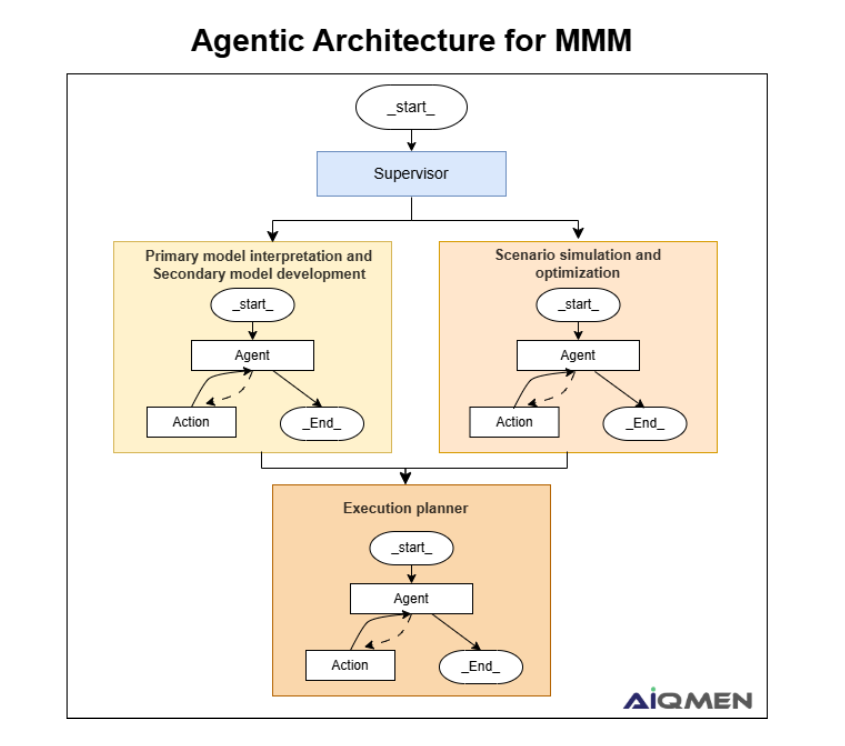Marketing Mix Modelling (MMM) is a powerful technique that helps quantify the effectiveness
of different media and marketing levers on business outcomes (such as sales, brand
metrics, etc.). It helps marketers understand how much credit to assign to TV, digital, print,
promotions, or other offline tactics—while accounting for external factors like seasonality,
pricing, or competition. At its core, MMM is about making smarter investment decisions using
past performance as a guide.
As privacy regulations tighten and digital tracking continues to erode, marketers are turning
back to Marketing Mix Modelling (MMM) to answer a critical question: what’s truly driving
business growth?
This modelling approach, while decades old, has become newly relevant as cookies
disappear and attribution becomes murkier. Yet, despite its analytical power, MMM still
struggles sometimes to close the loop between insight and action.
MMMs typically delivers macro-level ROI insights. They can tell you that TV delivers a 1.4x
return on investment, that search is your most efficient digital channel, or that print
contributes little to overall business outcomes. These results are useful—especially when
you're looking to justify budgets or evaluate macro-level media mix shifts.
But the real challenge begins when you try to translate these insights into actionable plans.
Traditional MMM approaches aggregates performance across broad channels or tactics,
meaning it rarely tells you which specific formats, audiences, creative types, or time slots are
actually working. Knowing that TV is effective is only half the battle. Should that spend go to
primetime or daytime? Should you favor sports programming or entertainment? Should you
focus on 15-second or 30-second spots? Traditional MMM doesn’t say. The result is a
growing disconnect between modelling outputs and the day-to-day decisions media planners
need to make. The insight may be statistically sound—but without a path to execution, it
often ends up sitting in a slide deck or dashboard, underutilized.
This isn’t just a technical problem—it’s a strategic one. If your measurement framework can’t
inform tactical execution, you’re leaving value on the table.
This is where Agentic AI offers a transformative leap.
Let’s say your primary MMM concludes that YouTube performs well. The agent doesn’t stop
there. It drills down into format types (skippable vs. bumper), audience segments (Gen Z vs.
millennials), and device usage (mobile vs. desktop). It then simulates spend reallocation
scenarios, evaluates their expected impact, and recommends a mix that best aligns with
your KPIs—whether that’s ROI, reach, or cost-per-action.
What’s unique here is that this process isn’t static. As new campaign data flows in, the agent
re-learns, re-optimizes, and evolves its recommendations. Over time, your marketing
strategy becomes a living system: always responsive, always learning.
In a traditional setup, once the MMM results are delivered, it could take weeks for the
insights to be translated into a new media plan—often involving several rounds of
interpretation, agency discussions, and tactical revisions. By contrast, an agentic workflow
collapses this timeline dramatically.
The system ingests MMM outputs, applies micro-level performance models built on historical
campaign data, and uses reinforcement learning to recommend optimal allocations at the
most granular level supported by your data. These recommendations are instantly usable –
meaning they can be passed directly into campaign planning tools, media briefing docs, or
buying platforms. This workflow turns MMM from a backward-looking tool into a forward-
driving engine—one that can not only analyze what worked but proactively suggest what to
do next.
The implications of this shift are substantial.
First, it enables true granularity. Instead of vague channel-level ROI, marketers get clear
guidance: allocate 60% of your TV spend to 30-second primetime spots in Tier 1 cities; shift
20% of your digital budget to skippable YouTube ads targeting mobile-first users in urban
clusters; reduce out-of-home in regions with low footfall and high cost-per-impression.
Second, it creates speed and scale. Agentic systems operate continuously. The agent can
simulate "what if" questions on the fly, helping marketing teams be more agile and
responsive.
Third, it keeps the marketer in control. Agentic AI doesn’t replace strategic thinking—it
enhances it. Human decision-makers stay in the loop, guiding high-level priorities, validating
outputs, and ensuring recommendations align with brand values and commercial goals.
And finally, it creates a closed-loop system. With performance data feeding back into the
model, marketing becomes not just data-informed, but self-improving over time.

